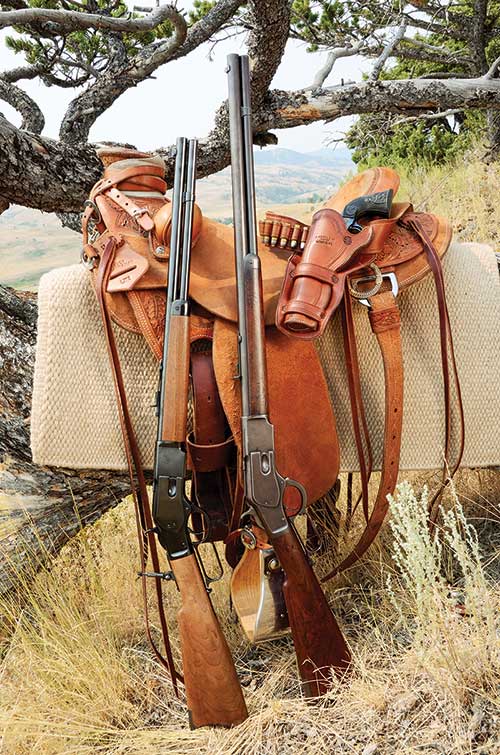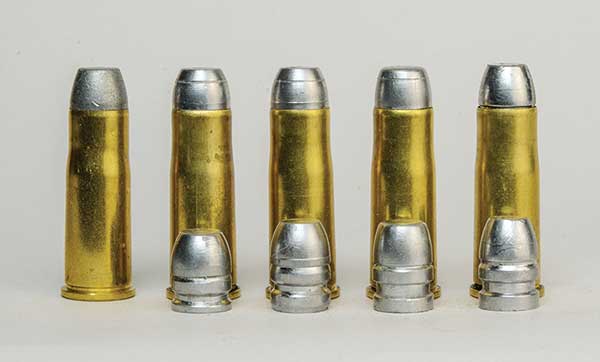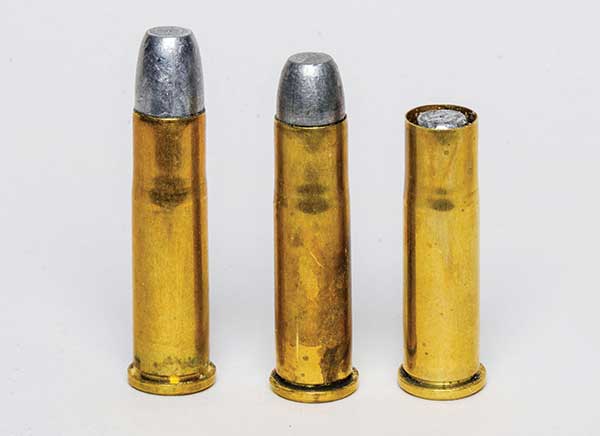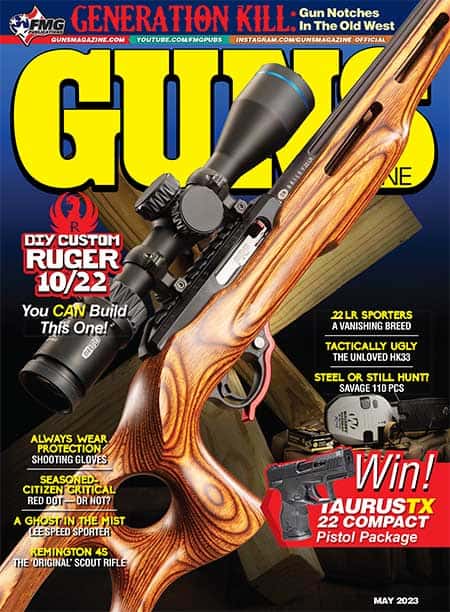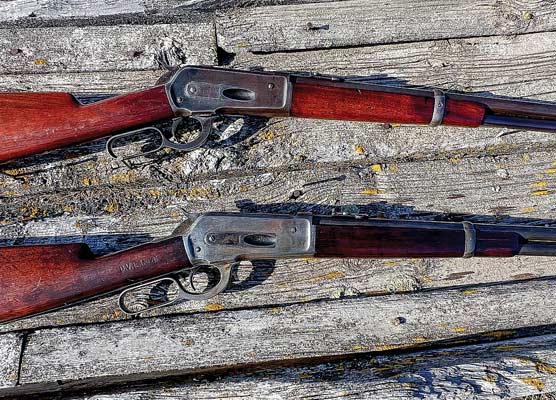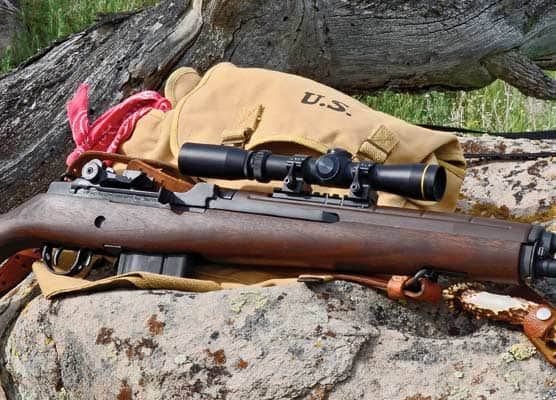Handloading For Combos
One For All, All For One
For many reasons some handgunners like having a rifle/carbine of the same caliber as their pistol. I’m one of those people. The idea started about 150 years ago when people traveling into unsettled areas of our west thought having a repeating rifle with matching caliber sixgun was a fine idea.
Twins
The first combos were Henrys or Winchester Model 1866s combined with S&W, Colt or Remington revolvers; all chambering the same .44 Henry Rimfire. The concept continued through the era when .44-40s, .38-40s and .32-20s ruled and remains popular today with rounds like .357 and .44 Magnum and even .45 Colt. Heck, I even know one fellow who has semi-auto carbines matching his .45 Auto, .40 S&W and 9mm Parabellum handguns.
Author’s note: In the black powder era, .45 Colt case rims were only about 0.502″/0.504″ wide. This is too small for lever gun extractors to work reliably. Modern .45 Colt brass has wider rim diameters of approximately 0.512″. They obviously function fine in the myriad .45 Colt replica lever guns being imported now from Japan, Italy and Brazil.
Most factory ammunition for the above lever gun/revolver cartridges should feed and function perfectly in currently made firearms. Regardless it’s never a bad idea to check before relying on it. Handloaders need to pay a bit more attention in assembling their ammo as I have learned through experience.
Here’s an example: For a new Colt SAA .32-20, I ordered a four-cavity bullet mold for a 115-grain RN/FP from MP Molds of Slovenia. It shot beautifully from the revolver so I bought a Cimarron Arms Model 1873 .32-20 carbine as its companion. To my chagrin, my loads’ overall loaded length was too long for the 1.592″ maximum allowed by the lever-gun’s action. Vintage Winchester Models 1873 and 1892 and their replicas all have that same cartridge length limit
.
How about just seating bullets deeper and crimping over their front driving bands? Tried that — started loading the magazine and by round three, bullets plopped back on top of powder charges. This can raise pressures to the danger point. The remedy was to order another four-holer from MP Molds for a shorter 105-grain RN/FP bullet and all was well. If you are going to handload for both revolver and lever gun, check a loading manual for the overall cartridge length and make sure it’s within 1.592″.
There is another caveat. Any shape bullet — RN, SWC, WC or RN/FP — is fine with revolvers but not so lever guns. SWCs and WCs with their sharp edges are likely to hang up during chambering, with the former usually having too long a nose to fit the rifle’s acceptable length parameters. Round-nose bullets, especially if cast of hard alloy, can definitely cause primer ignition in cartridges ahead in magazines. That is no myth. Not to me so far but it has happened to people I know. The proper bullet for tubular magazines is the RN/FP. It will hit animals about as hard as the legendary SWCs but will function perfectly and safely.
Don’t Scrimp On Crimp
Not all handgun bullets intended for cartridges and also offered in repeating rifles and carbines have their crimping groove in the proper location and some do not have it at all. Back in the black powder era, crimp was not so important in rifles and carbines as it was in revolvers.
The reason was the case full of black powder under the bullet. In magazine tubes, bullets were not going to go backward and certainly were not moving forward as possible with revolvers. An unscientific way to tell if you have crimped suitably is to run your fingernail from bullet to over the crimp on the case. If your fingernail doesn’t hang up on the crimp, it is enough.
In our younger years, Yvonne and I participated in cowboy action events. She is a mite recoil sensitive so I outfitted her with a Navy Arms (Uberti) Model 1866 .38 Special carbine and a pair of Colt SAA .38 revolvers. One cold Montana winter I decided to get ahead on the handloading chores.
Starting with a 1,000-round box of commercially cast .38/.357 RN/FP bullets and a bucket of fired cases, I loaded them all while crimping normally in the supplied groove. Of course, all would drop in the sixguns but it only took one in the lever gun to tie up its works. Their overall loaded cartridge length was too long for the brass lifter in the carbine. There are still several 100-round boxes of .38 Specials in our ammo shelves with cards inside specifying USE IN REVOLVERS ONLY.
